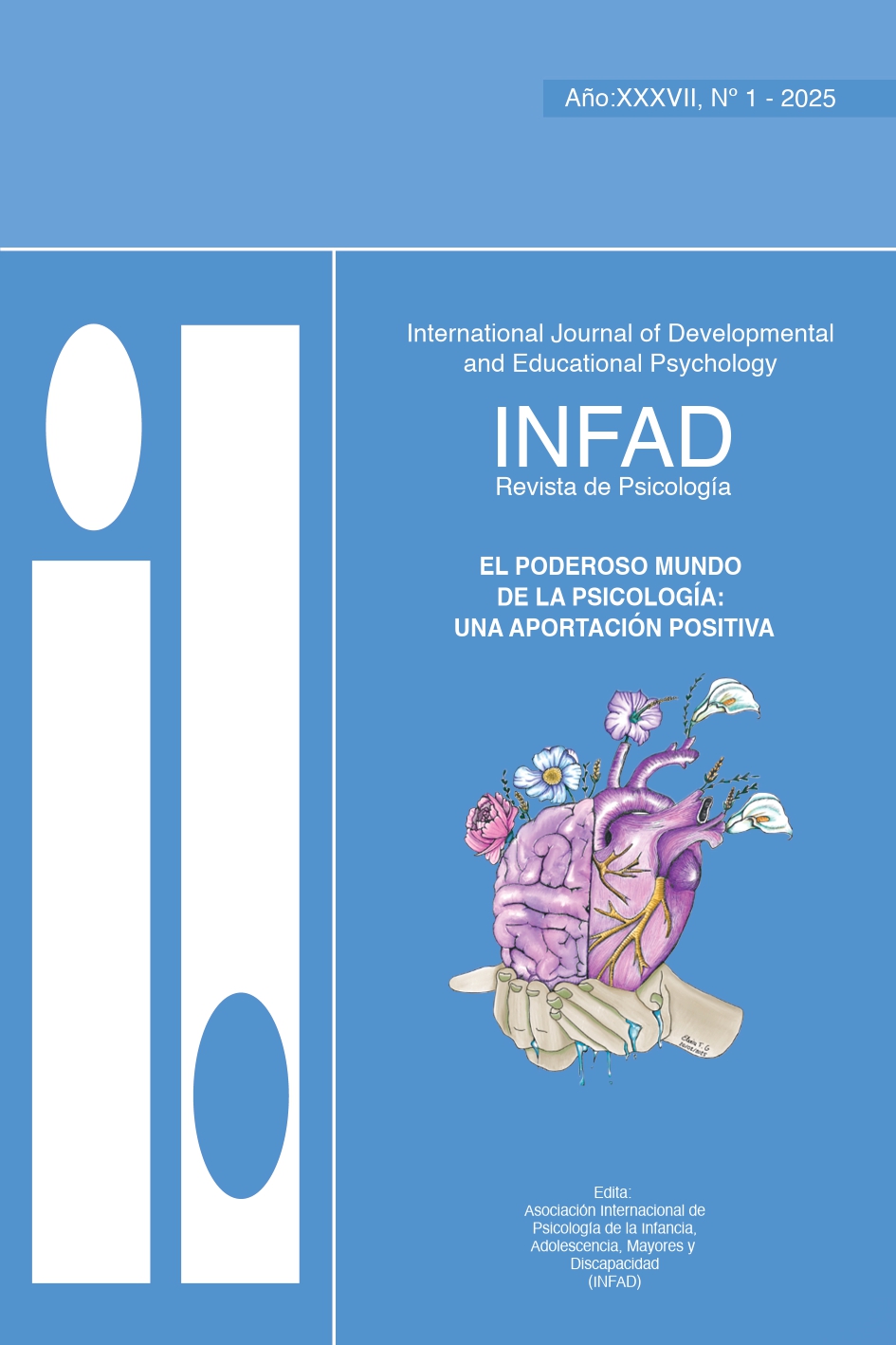Is body image related to problematic social network use in adolescence?
Main Article Content
Abstract
The use of social media by adolescents may influence their body self-image. The aim of this study was to analyse the relationship
between problematic use of social media and body image in a representative sample of Spanish adolescents. For this purpose, the Body Image Scale C and the Questionnaire of problematic use of social networks were administered to a sample of 1164 students of Secondary Education (M=14.56 years; SD=1.40). The results showed that
problematic use of social media is positively and significantly related to the difference between body image and real body image. Furthermore, it was found that those adolescents with high problematic social media use, compared to the medium and low use group, had a greater difference between how they saw themselves physically and how they wished their body to be. In this sense, the likelihood of having high problematic social network use was 1.17 times higher as the difference between actual and ideal body image increased by one unit. These findings should be considered in order to promote positive and adjusted body image and prevent problematic social
media use in adolescents.
Article Details
Section

This work is licensed under a Creative Commons Attribution-NonCommercial-NoDerivatives 4.0 International License.
Attribution — You must give appropriate credit, provide a link to the license, and indicate if changes were made. You may do so in any reasonable manner, but not in any way that suggests the licensor endorses you or your use.
NonCommercial — You may not use the material for commercial purposes.
NoDerivatives — If you remix, transform, or build upon the material, you may not distribute the modified material.

This work is licensed under a Creative Commons Attribution-NonCommercial-NoDerivatives 4.0 International License
How to Cite
References
Adams, M. (2016). Internet addiction: Prevalence, risk factors and health effects . Nova.
Boniel-Nissim, M., Bersia, M., Canale, N., Lahti, H., Ojala, K., Ercan, O., ... y Dalmasso, P. (2024). Different Categories of Social Media Use and Their Association With Body Image Among Adolescents in 42 Countries. International Journal of Public Health, 69, 1606944. https://doi.org/10.3389/ijph.2024.1606944
Boniel-Nissim, Meyran, Marino, Claudia, Galeotti, Tommaso, Blinka, Lukas, Ozoli a, Krist ne. et al. ( 2024) . A focus on adolescent social media use and gaming in Europe, central Asia and Canada: Health Behaviour in School-aged Children international report from the 2021/2022 survey . World Health Organization. Regional Office for Europe. https://iris.who.int/handle/10665/378982
Boursier, V., Gioia, F., y Griffiths, M. D. (2020). Selfie-engagement on social media: Pathological narcissism, positive expectation, and body objectification–Which is more influential?. Addictive behaviors reports, 11, 100263. https://doi.org/10.1016/j.abrep.2020.100263
Charmaraman, L., Richer, A. M., Liu, C., Lynch, A. D., y Moreno, M. A. (2021). Early adolescent social media-related body dissatisfaction: Associations with depressive symptoms, social anxiety, peers, and celebrities. Journal of Developmental and Behavioral Pediatrics: JDBP, 42 (5), 401-407. 10.1097/DBP.0000000000000911
Cohen, J. (1988). Statistical power analysis for the behavioral sciences (2ªEdición.) Hillsdale, NJ: Erlbaum.
Delgado, B. y Martínez-Monteagudo, M.C. (2023). Cuestionario sobre el uso problemático de las redes sociales en adolescentes. Disertación no publicada. Universidad de Alicante.
Echeburúa, E., y Requesens, A. (2012). Adicción a las redes sociales y nuevas tecnologías en niños y adolescentes . Pirámide.
Fabris, M. A., Marengo, D., Longobardi, C., y Settanni, M. (2020). Investigating the links between fear of missing out, social media addiction, and emotional symptoms in adolescence: The role of stress associated with neglect and negative reactions on social media. Addictive Behaviors, 106, 106364.10.1016/j.addbeh.2020.10636
Jarman, H. K., Marques, M. D., McLean, S. A., Slater, A., y Paxton, S. J. (2021). Social media, body satisfaction and well-being among adolescents: A mediation model of appearance-ideal internalization and comparison. Body Image, 36 , 139-148. 10.1016/j.bodyim.2020.11.005
Kuss, D. J., Kristensen, A. M., y Lopez-Fernandez, O. (2021). Internet addictions outside of Europe: A systematic literature review. Computers in Human Behavior, 115 , 106621. https://doi.org/10.1016/j.chb.2020.106621
Montag, C., Demetrovics, Z., Elhai, J. D., Grant, D., Koning, I., Rumpf, H. J., M Spada, M., Throuvala, M., y van den Eijnden, R. (2024). Problematic social media use in childhood and adolescence. Addictive behaviors, 153 , 107980. https://doi.org/10.1016/j.addbeh.2024.107980
Observatorio Nacional de Tecnología y Sociedad (2023). Impacto del aumento del uso de Internet y las redes sociales en la salud mental de jóvenes y adolescentes. Secretaría de Estado de Digitalización e Inteligencia Artificial. Ministerio de Asuntos Económicos y Transformación Digital.
Thompson, M. A., y Gray, J. J. (1995). Development and validation of a new body-image assessment scale. Journal of personality assessment , 64 (2), 258-269. doi.org/10.1207/s15327752jpa6402_6
Twenge, J. M., Martin, G. N., y Campbell, W. K. (2018). Decreases in psychological well-being among American adolescents after 2012 and links to screen time during the rise of smartphone technology. Emotion, 18 (6), 765–770. https://doi.org/10.1037/emo0000403
Wartberg, L., Kriston, L., y Thomasius, R. (2019). Internet gaming disorder and problematic social media use in a representative sample of German adolescents: Prevalence estimates, comorbid depressive symptoms, and related psychosocial aspects. Computers in Human Behavior, 103 , 31–36. https://doi.org/10.1016/j.chb.2019.09.014

